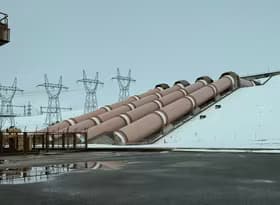
The implications of tumbling export prices
Rapidly declining export prices have ramped up the pressure on New Zealand exporters and pushed our terms of trade to a seven-year low. Export prices were down by 13%pa in the December 2023 quarter, the largest annual decline since 2009. In comparison, import prices fell a much smaller 2.2%pa. In this article, we examine the drivers of changing export and import prices, and the implications of a lower terms of trade.
Dairy, forestry, and meat prices take a dive
Stats NZ merchandise trade data shows that the steep decline in export prices was largely driven by prices for dairy, meat, and forestry products. Dairy and casein prices fell 19%pa in the December 2023 quarter, meat prices were down 15%pa, and forestry prices dropped by 14%pa. Chart 1 shows the largest price declines in these categories for more specific products. Milk powder prices fell a massive 24%pa, the largest drop across all sub-categories.
Lower demand, particularly from our largest trading partner, China, is the central driver of falling prices. An increased supply of lamb from Australia, with farmers sending their stock to the works due to drought, has also affected meat prices.
It is worth noting that although prices are down considerably on an annual basis, some primary sector prices have begun to pick up over the past few months. The ANZ commodity price index points to a 12% increase in dairy prices in January 2024 from their August 2023 low (see Chart 2). Gradual improvements in Chinese demand for logs have also helped forestry prices to lift slightly over the latter half of 2023 and into 2024.
Export prices will remain subdued during 2024 as global economic activity continues to be soft. However, with the elevated prices from 2022 coming out of the numbers, we might now be through the worst of the annual declines.
Import prices aren’t falling as fast
Chart 3 shows the accelerated decline in export prices, in contrast to a slowing pace of decline for import prices.
As struggling primary products send export prices lower, higher prices for machinery, plastics, and petrol have limited the rate of annual decline in import prices. Transport equipment prices rose 3.6%pa in the December 2023 quarter, and there was a 3.3%pa increase in road vehicle prices (Chart 4).
On a quarterly basis, import prices rose 3.8% from September 2023, while export prices eased 4.2%. Between the September and December quarters, imported petrol and petroleum product prices rose 19%, transport equipment prices rose 2.8%, and plastics prices rose 2.7%.
What a worse terms of trade actually means
As a result of more rapidly declining export prices, the terms of trade index (which is the ratio of export to import prices) fell 11%pa in the December quarter. This result was also the largest decline for the index since 2009 (Chart 5). A lower terms of trade means we are getting less bang-for-buck with our exports, and therefore it will be more difficult to finance our desired import volumes.
One of the consequences of the worsening terms of trade is that it could limit improvements in our large current account deficit, risking more overseas debt. September quarter data indicates that the current account balance (CAB), which has been in deficit since the 1970s, is sitting at -7.6% of GDP over the year to September 2023, a slight improvement from its 46-year high of -8.8% of GDP in December 2022, but still uncomfortably high.
The CAB is essentially a balance sheet of New Zealand’s international trade and financial transactions, and it will suffer from lower export revenue. The problem with a large deficit in proportion to GDP is that it risks debt growing faster than the economy, creating an unsustainable debt burden. You could liken this to a household that sees their debt growing at a faster rate than their income.
Our expectation for next week’s December quarter current account data was for the annual deficit to shrink to 7.3% of GDP, but the weak terms of trade puts that improvement in jeopardy. Further forecast reductions in the CAB towards -5.6% of GDP this year will also be harder to achieve given weak export prices.
New Zealand's export-oriented economy relies heavily on global demand, particularly from key trading partners like China. Given the uncertain outlook for Chinese demand and the ongoing pressures in our primary sector, we will continue to monitor developments in international trade and support clients to navigate these tougher conditions.




















